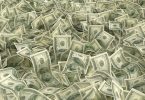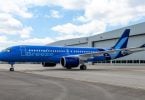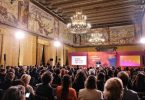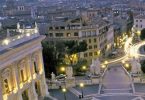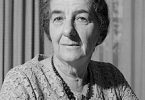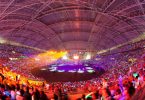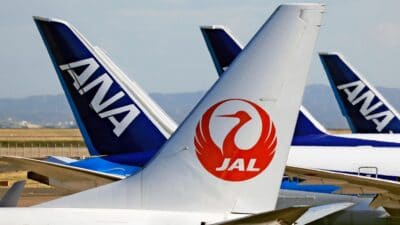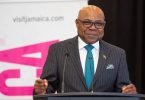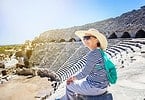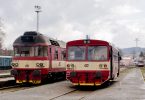Despite most markets sinking deeper into the financial crisis, the Kingdom of Saudi Arabia appears recession-proof to this day. Key developments and investments in Saudi Arabia’s real estate sector and tourism infrastructure are expected to remain strong, said the kingdom’s leading business figures.
Abdullah M. Bin Mahfouz, vice chairman of the Jeddah Chamber of Commerce and Industry, said that although international financial markets are reeling from the global recession, development and investment in the kingdom’s real estate sector is holding up. In view of hosting the next Cityscape Saudi Arabia, a networking exhibition and conference focusing on all aspects of the real estate development cycle, he said that he is optimistic about the impact that the show will leave on Jeddah City, as well as on real estate investment for years to come.
A recent report from real estate experts Jones Lang LaSalle showed that Saudi Arabia’s large domestic economy is less dependent on global flows of capital and labor. There are also many opportunities for investors, developers and occupants with a recent snap poll showing that Saudi Arabia is expected by the construction industry to take center stage in the coming period, said Deep Marwaha, event director for Cityscape Saudi Arabia. She added in these difficult times in the international property and real estate industry, Saudi Arabia continues to have pent-up demand combined with strong fundamentals.
Marwaha added: “There are still high levels of liquidity in the kingdom and, given the current global economic climate, the kingdom’s investors are arguably the most significant in the world.”
“There are a large number of investment opportunities in Saudi Arabia. We have a robust tourism program and long-haul perspective for the industry. We have the mandate to run the heritage sites. With new perspectives, we want to tap into this cultural side of Saudi Arabia with the help of government incentives – where people can invest in smaller rural areas or untapped, ineffective smaller regions in the country which cannot start on their own,” said Prince Sultan bin Salman bin Abdulaziz, chairman of the Supreme Commission of Tourism and Antiquities. A five-year strategic plan in Saudi gives KSA’s tourism industry a big boost. Major programs for developing historic villages of Saudi Arabia have been rolled out. Revival of Saudi’s old towns matched the idea of developing inns along the countryside in a bid to lure more guests from within the region and beyond.
Amusement parks and a host of new family recreation centers in Saudi Arabia will also put the Kingdom at the forefront of regional progress, while many Arab Gulf states already start to feel the pinch of the global recession.
Saudi remains unprecedented as far as having high liquidity in the market. “It is quite a shame that many in the US overlook what transpires in Saudi whose GDP is over $400 billion compared to the United Arab Emirates’ $200 billion. Saudi Arabia prides a real estate market value of $267 billion in 2007 with 4.5 million housing units will be needed in the next five years. In 2012, the current $347 billion in investment opportunities will have gone up to $1.3 trillion,” said Edward Burton, president and managing director, US-Saudi Arabian Business Council (US-SABC) at the first Cityscape USA conference in Manhattan.
Burton added that the Kingdom of Saudi Arabia is fast-emerging as the economic muscle of the Gulf, playing catch up in the residential and commercial side of the market due to its large youthful population – 70 percent of whom are under the age of 30. Saudi’s per capita income is $60,000 with rising income level of $15, 394 contributing to GDP. Total foreign direct investments ran up to $18.1 billion in 2007. However, there was a 2 percent increase in inflation rate from 9 percent to 11 percent in 08.
To boot, six economic cities in Saudi are estimated to add $151 billion to the GDP of the KSA. Spanning the desert, each city of 567 sq. kms or 2191 miles gives birth to seven financial districts generating $110 billion worth of investment opportunities. Ten industrial areas are already open, with five in the pipeline. For Saudi’s burgeoning population, the required epicenters for real estate and future developments will be Riyadh, Jeddah, Mecca and Medina, and the Eastern Province.
Nothing compares with Saudi Arabia when it comes to liquidity. Spending power is immense, said Burton. Tourism potential in Saudi is growing. Visa laws have been changed to allow religious tourists or pilgrims to extend their visa for three months for shopping. Furthermore, there are three quarters of a million backlog of housing today in Riyadh which produces only 24,000 units a year. There are no logistics for parks, no distribution centers, no courier service centers around the airports and ports– meaning there’s so much to do in less time expected for progress to spread fast in the kingdom.
The accommodation sector is on fast-forward, as well. According to the local Arab News, hotels and furnished apartments in Saudi Arabia have achieved an occupancy rate of 50.6 percent and 58 percent respectively during 2008 against 50.8 percent and 50 percent the previous year, the Tourism Information and Research Center at the SCTA in its annual accommodation statistical report. The report said 24,016,916 hotel and 24,749,543 furnished apartment rooms were occupied last year against 24,960,318 hotel rooms and 15,629,404 furnished apartment rooms in 2007.
According to the report, hotel occupancy during January, which coincided with the pilgrimage season in 2008, reached 57 percent with 2,246,513 rooms fully booked. Occupancy of furnished apartments reached a peak of 64.2 percent last August because of the summer vacation. The report said, Makkah came first with about 15.6 million rooms, Madinah second with 3.7 million rooms, Riyadh third with 1.6 million rooms and the Eastern province fourth with 1.2 million rooms. Makkah maintained its lead position in the occupancy (59.1 percent) of furnished apartments with 9.8 million rooms occupied followed by the Eastern province (56.8 percent) with 3.2 million rooms occupied. Madinah came third and Riyadh fourth.



